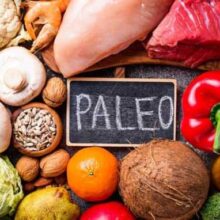This is for Everyone Who Still Goes to Starbucks
The post This is for Everyone Who Still Goes to Starbucks appeared first on Healthy Holistic Living.
There must be dozens of Starbucks locations in my city. And they’re always packed with patrons, young and old, sipping on extra hot half-caf lattes or guzzling peppermint mochaccinos while heading out the door. You have to admit, they have a genius business model.
But popularity isn’t the same thing as goodness, and that’s something we all have to keep in mind as consumers. If you’re a regular coffee drinker, it’s not just your wallet that you should be worried about when it comes to choosing the right cup of Joe. Mass-produced coffee like the kind you find in Starbucks has some important differences than other options in the playing field. Here’s what you need to know.
Flavor Shots: Preservatives, GMO and High Fructose Corn Syrup
There’s a new one every season, and everyone has their favorite flavor (I’m a sucker for peppermint), but adding a pump or two to your coffee and hot chocolate can lead to some pretty serious health effects.
First, there are the preservatives. These flavor shots were designed to be able to sit on shelves for a really long time without going bad. Potassium sorbate, the main preservative found in Starbucks flavor shots (1), has been suspected of damaging the white blood cells active in the lymphatic system. (2) Your lymph system is integral for staying healthy and fighting off disease and infection. Another preservative (doubling as an emulsifier) used in Starbucks flavor syrups is soy lecithin. Made from soybean oil, soy lecithin is often genetically modified (5), and not to mention a very common food allergen. Starbucks can claim honestly that their coffee beans are organic, but they certainly can’t say the same about their flavored coffee.
Flavored drinks also contain a great deal of high fructose corn syrup (in fact, it makes up the largest portion of ingredients in flavored syrup)(1). Researchers found that consuming beverages with high fructose corn syrup for just 2 weeks raised the risk of cardiovascular disease even more so than regular fructose or glucose (3). More than that, high fructose syrup is so commonly used as a sugar replacement because it appeared not to cause blood sugar spikes. The truth is, however, that constant consumption is connected with dangerous high blood pressure, obesity, and insulin resistance (4).
What to Drink Instead
Just because a peppermint mocha or a vanilla chai latte are out of the question at Starbucks, doesn’t mean you can’t enjoy them elsewhere. Actually, you can make a lot of flavors at home! Add 5 sprigs of fresh mint and 1 1/2 cup of dark chocolate to hot water, organic milk or milk alternative instead of buying a peppermint mocha from Starbucks (6). Or if you’re all about vanilla lattes, you can sprinkle some chopped up vanilla beans into your coffee grounds before brewing. You’ll get the vanilla taste infused right into the coffee! (7) And that’s just two options; you can find so many great ideas for natural, simple versions of your favorite flavors almost anywhere.
Coffee Beans: Mycotoxins
The coffee beans themselves, regardless of Starbucks claims of organic origins, contain traces of mycotoxin Ochratoxin A. One study concluded that even after roasting and brewing coffee beans, ochratoxin a can still remain intact. (8) Mycotoxins’ effects on the body include infections, allergies, gastrointestinal diseases and carcinogenic diseases. (9).
What to Drink Instead
Look for wet-processed beans
Avoid blends and stick to single-sourced beans
Avoid robusta beans and stick to arabica
Coffee from Central America (think Costa Rica) and other high-elevation areas (10)
ONE OF THESE DANGEROUS ADDITIVES IS CARRAGEENAN
Carrageenan is extracted from red edible seaweeds and is added as a thickener and to keep ingredients from separating as an emulsifier. Even though it’s often marketed as a “natural” ingredient; the research suggests otherwise. The problem? Carrageenan is so inflammatory that researchers usually use it to to study the molecular signals involved in cancer and anti-inflammatory drugs. In fact, over 3,800 studies show carrageenan causes inflammation.
The concern over food-grade carrageenan isn’t new. Beginning in the 1960s, scientists began linking it to gastrointestinal problems in lab animals, including ulcerative colitis, intestinal lesions, and colon cancer. In studies of animals, carrageenan was found to cause cancers and ulcers in animals. More studies showed that it can also contribute to Irritable Bowel Syndrome (IBS) and breast cancer. It might also be linked to diabetes and insulin resistance.
In April 2016, the Cornucopia Institute published summary research demonstrating that even food-grade carrageenan had the carcinogenic contaminant low-molecular weight poligeenan.
Carrageenan may also contain MSG (monosodium glutamate) a chemical compound that can cause blood pressure, joint pain, diarrhea, blurred vision, irregular heartbeat, depression, anxiety, migraines and more.
Starbucks isn’t the only place to have a good cup of coffee. If you stumble across a local cafe or roastery that shares your health priorities, let people know! And remember to take care of yourself holistically; if you find that you’re relying on the caffeine buzz to get you through every day, it’s time to take a step back and take stock of how you’re treating your body and your mind. That cappuccino is never worth putting stress on your adrenals or anything else.
Sources:
(1) Starbucks Store. Fontana Caramel Sauce. Starbucks Store. Retrieved from: http://store.starbucks.com/fontana-caramel-sauce-000188039.html?&srule=Featured&start=0&sz=12&cgid=syrups-and-sauces.
(2) Mamur et al. Does potassium sorbate induce genotoxic or mutagenic effects in lymphocytes? Toxicology in Vitro. April, 10;24 (3): 790-794. Retrieved from: http://www.sciencedirect.com/science/article/pii/S0887233309003853 .
(3) Stanhope, et al.Consumption of Fructose and High Fructose Corn Syrup Increase Postprandial Triglycerides, LDL-Cholesterol, and Apolipoprotein-B in Young Men and Women. The Journal of Clinical Endocrinology and Metabolism. August, 2011; 6 (10). Retrieved from: http://press.endocrine.org/doi/abs/10.1210/jc.2011-1251.
(4) Sarich, Christina. Newly Discovered Dangers of High Fructose Corn Syrup is Alarming. Natural Society. Retrieved from: http://naturalsociety.com/newly-discovered-side-effect-of-high-fructose-corn-syrup-is-alarming/.
(5) Clemente, et al. Soybean Oil: Genetic Approaches for Modification of Functionality and Total Content. Plant Physiology. 2009; 151. Retrieved from: https://www.researchgate.net/profile/Edgar_Cahoon/publication/26840466_Soybean_Oil_Genetic_Approaches_for_Modification_of_Functionality_and_Total_Content/links/00b7d52a8afe05e79c000000.pdf.
(6) Not without Salt. Fresh Mint Hot Chocolate. Not Without Salt. Retrieved from: http://notwithoutsalt.com/fresh-mint-hot-chocolate/.
(7) Lexie. Eight Ways to use a Vanilla Bean. Cheatin Wheat. Retrieved from: https://www.cheatinwheat.com/blog/eight-ways-use-vanilla-bean.
(8) Studer-Rohr et al. The occurence of ochratoxin a in coffee. Food and Chemical Toxicology. 1995; 33(5): 341-355. Retrieved from http://www.sciencedirect.com/science/article/pii/027869159400150M.
(9) Fung and Clark. Health effects of mycotoxins: a toxicological overview. Journal of Toxicology: Clinical Toxicology. 2004; 4 (2). Retrieved from: http://www.tandfonline.com/doi/abs/10.1081/CLT-120030947 .
(10) Alex Malinski. How to choose mycotoxin-free coffee. Natural News. 2011. Retrieved from: http://www. Natural News /034063_mycotoxins_coffee.html.
11. https://www.ncbi.nlm.nih.gov/pmc/articles/PMC5410598/
12. https://www.ncbi.nlm.nih.gov/pmc/articles/PMC1242073/
The post This is for Everyone Who Still Goes to Starbucks appeared first on Healthy Holistic Living.










